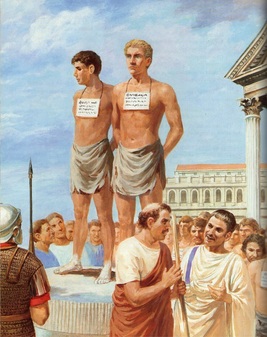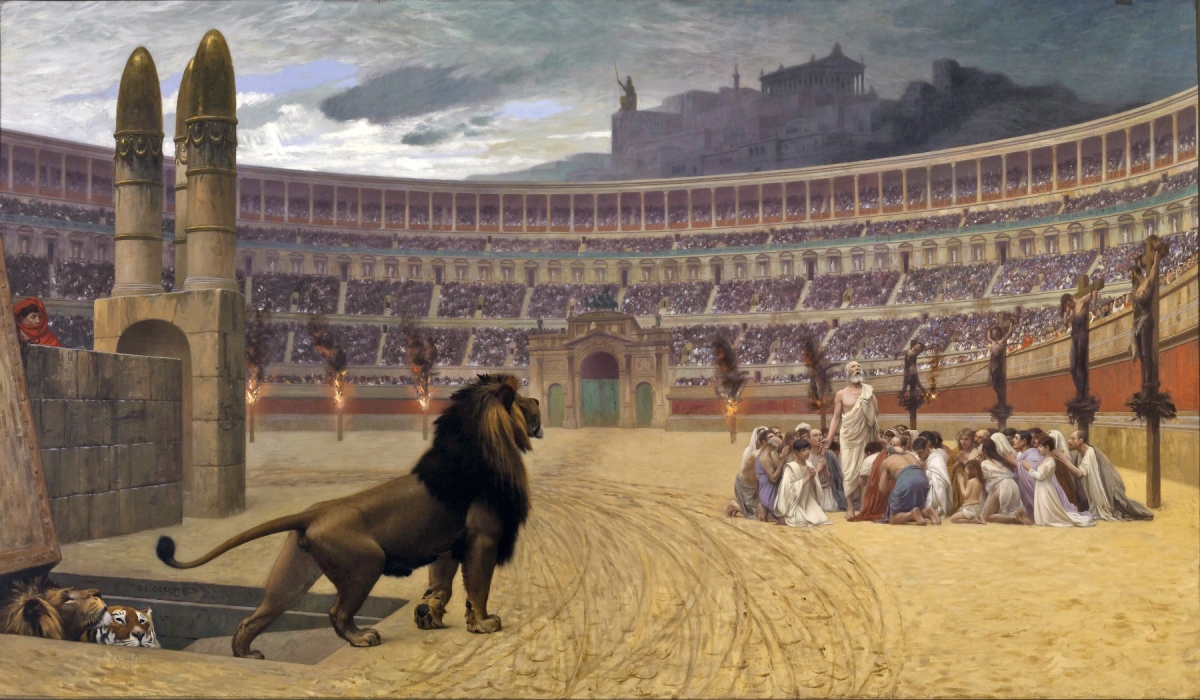Recently in my Humanities Core seminar class, we reexamined the Roman empire and how it has been presented to us through our lectures.
In short, it was analyzed that a sense of glorification was given off based on the information provided. We had ended our learnings with the empire’s glorious “Pax Romana” period, a time of security and prosperity. However, this period of peace and flourishment of the arts was achieved with a cost.
A bit of history that was a tad bit, well, overlooked, is the amount of slavery that went on during the growth of the Roman empire. In the time that Augustus ruled, the slave population of Italy “was as high as 30% […]” (Cartwright, “Slavery”). Much like black slaves during the 1800’s in the colonies of the US, “[s]laves were the lowest class of society […] Slaves had no rights at all in fact and certainly no legal status or individuality” (Carthwright, “Slavery”).

Both slaves in the Roman empire and early American empire were amounted to property, being dehumanized and altogether treated as outliers to the main societies of both. The general populations of both empires never saw the harm in enslavement since in both cases it was a social norm. In the Roman empire, “[s]lavery was […] not considered an evil but a necessity by Roman citizens” (Cartwright, “Slavery”). This is also comparable to the US’s view of slavery during its time. According this article by the Library of Congress, “[o]ne of the primary reasons for the reinvigoration of slavery was the invention and rapid widespread adoption of the cotton gin.” Before the cotton gin, slavery was “actually a dying institution,” which, to me, makes my heart only heavier (Cartwright, “Slavery”). The gain of a more efficient way to pick cotton came with the cost of harsh, conditional manual labor and the exploitation of African people.

In a disheartening but similar way, the inducing of the famous and vast- looking Roman colosseum came with the cost of slave lives as well. The gladiators, who put on shows for the people of the Roman empire, would fight lions or other gladiators at times. However, “[a]s fights were usually to the death, gladiators had a short life expectancy” (Cartwright, “Gladiator”). For this reason, the Romans used slaves as expendable beings for the entertainment of the people. In all honesty, though slavery has been prevalent in my learnings throughout elementary school, this form or exploitation seems just as evil.
I wanted to bring this comparison to attention because in similar ways, the way we are taught about history, mostly, is from someone else’s point of view. It is important to remember when reading a news article or learning about current or past events in history the kinds of biases you may be dealing with.
The achievements of both the Roman empire and United States are indeed impressive, but they come with serious expenses that can be neglected.
Works Cited
Cartwright, Mark. “Slavery in the Roman World.” Ancient History Encyclopedia. Last modified November 01, 2013. http://www.ancient.eu /article/629/. Accessed 18 Oct. 2016.
Cartwright, Mark. “Gladiator.” Ancient History Encyclopedia. Last modified November 06, 2012. http://www.ancient.eu /gladiator/. Accessed 18 Oct. 2016.
Gérôme, Jean-Léon. The Christian Martyrs’ Last Prayer. 1883, oil on canvas, Walters Art Museum, Baltimore, Maryland. https://en.wikipedia.org/wiki/Colosseum#/media/File:Jean-L%C3%A9on_G%C3%A9r%C3%B4me_-_The_Christian_Martyrs%27_Last_Prayer_-_Walters_37113.jpg (Header Photo)
“My Life: I Am A Slave.” The Slave Market. http://romanslavery.weebly.com/the-slave-market.html. Accessed 18 Oct. 2016.
“Pre-Civil War African-American Slavery.” Library of Congress. U.S. Congress, http://www.loc.gov/teachers/classroommaterials/presentationsandactivities/presentations/timeline/expref/slavery/. Accessed 18 Oct. 2016.
TopFoto. Roman gladiators. 2015, online. https://historyandsoon.wordpress.com/2015/11/29/timeline-the-rise-and-fall-of-the-roman-games/.

Hi Kiana! I really enjoyed reading your post. It is very true that the slavery in the Roman Empire has been overlooked, as other things seemed more important in other people’s eyes. It is interesting to see how many things from our world today reflect the Roman Empire, whether it be slavery, entertainment or our political system. I believe you wrote this very well with enough analysis and evidence!
LikeLike
I, too, believe that slavery in Roman Empire shouldn’t be neglected. Many fails to see the vices of Roman Empire and moves on to glorify the beauty of Rome. It is also true that with Rome came the advancement of architectures and arts. However, like you said it cost slaves’ blood, tears and immense sacrifices. Your blog was very well written, and it’s been my pleasure to read it!!
LikeLike